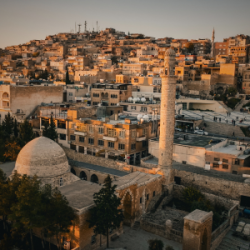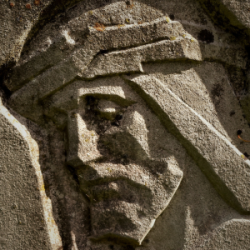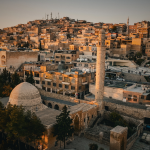Welcome readers! Please subscribe through the buttons on the right if you enjoy this post.
(Read this series from its beginning here.)

Rev. Dr. Kelly Brown Douglas gives us insight into how the rule of Roman law and order including Roman crucifixion functioned in Jesus’ society,
“In Jesus’’first-century world, crucifixion was the brutal tool of social-political power …. It indicated how much of a threat that a person was believed to pose. Crucifixion was reserved for those who threatened the ‘peace of the day. It was a torturous death that was also meant to send a message: disrupt the Roman order in any way, this too will happen to you ….The crucified class …. consisted of those who were castigated and demonized as well as those who defied the status quo. Crucifixion was a stand-your-ground type of punishment for the treasonous offense of violating the rule of Roman ‘law and order.’” (Stand Your Ground: Black Bodies and the Justice of God, p. 170)
Law and order should be to protect the vulnerable, those whom the more powerful in society will take advantage of if given the opportunity. Too often law and order and the rhetoric that surrounds a law and order approach is nothing more than the powerful of society using law enforcement to silence the unrest and protest of the marginalized crying out for a more just and more equitable society. The question we must always ask about law and order is which sector of society is our law and order serving and protecting.
Jesus stood in solidarity with the marginalized over and against those who would exploit them. When “law and order” is instead standing with the powerful and centered over and against the cries of those calling for justice we must recognize this not as life-giving to a society but death-dealing, literally. We can have peace through establishing distributive justice or we can have peace through a heavy-handed use of law and order that silences protest. These are two paths toward peace. Rome used the latter. In America presently, we are seeing the use of the latter. Marcus Borg and John Dominic Crossan comment on the error of using this method, “The terrible truth is that our world has never established peace through victory. Victory establishes not peace, but lull. Thereafter, violence returns once again, and always worse than before. And it is that escalator violence that then endangers our world.” (The First Christmas, What the Gospels Really Teach About Jesus’s Birth, p. 166).
Beware when you see those in power using law and order rhetoric used to maintain power, position, control, and political office. Jesus’ followers should be the first to recognize when law and order is being used to serve and protect the elite and privileged rather than the marginalized and excluded. America has a long history of law and order being used to systemically serve and protect only the elite or privileged. And Christians should be the first to recognize when this American tradition is being repeated. It’s what our story is all about.
The resurrection itself is God’s definitive, nonviolent victory over law and order being used to protect privileged positions of a society’s elite. The resurrection is God’s definitive, nonviolent victory over systemic death-dealing. This victory was not one where death is overcome by a more severe death-dealing. But one where the death dealt by an unjust system is overcome by life. Life and life-giving overcomes systemic death and death-dealing in the Jesus story.
Again, Rev Dr. Kelly Brown Douglas calls us to reorient our interpretations of what the Jesus story is actually saying to us in moments like this one we are presently witnessing in the U.S. “The resurrection is God’s definitive victory over crucifying powers of evil. Ironically, the power that attempts to destroy Jesus on the cross is actually itself destroyed by the cross. The cross represents the power that denigrates human bodies, destroys life, and preys on the most vulnerable in society. As the cross is defeated, so too is that power. The impressive factor is how it is defeated. It is defeated by life-giving rather than a life-negating force. God’s power, unlike human power, is not a ‘master race’ kind of power. That is, it is not a power that diminishes the life of another so that others might live. God’s’ power respects the integrity of all human bodies and the sanctity of all life. This is a resurrecting power. Therefore God’s power never expresses itself through the humiliation or denigration of another. It does not triumph over life. It conquers death by resurrecting life. The force of God is a death-negating, life-affirming force.” (Stand Your Ground: Black Bodies and the Justice of God, p. 188)
Luke’s gospel climaxes, not with a Roman cross, but a reversal, undoing, and overcoming of the rule of Roman law and order used by the elite over and against the marginalized:
“On the first day of the week, very early in the morning, the women took the spices they had prepared and went to the tomb. They found the stone rolled away from the tomb, but when they entered, they did not find the body of the Lord Jesus. While they were wondering about this, suddenly two men in clothes that gleamed like lightning stood beside them. In their fright, the women bowed down with their faces to the ground, but the men said to them, ‘Why do you look for the living among the dead? He is not here; he has risen!’” (Luke 24.1-6)
What resurrecting power against our societal injustice–both private and systemic–are you needing in your life today?
What resurrecting power are the gospels calling you to go forth and exercise in our own lives as members of our society?













